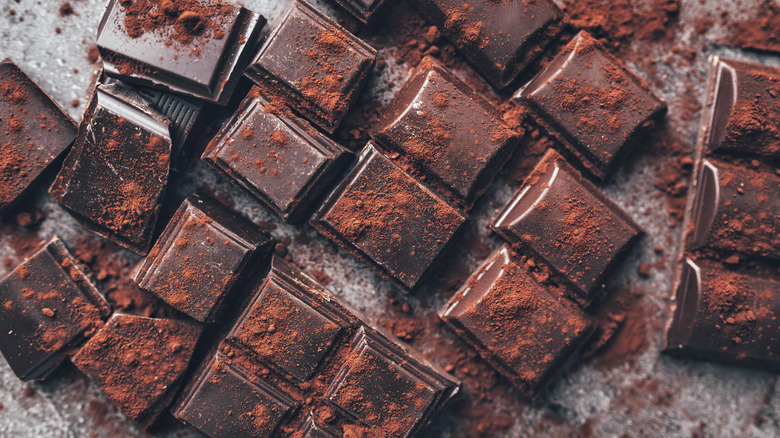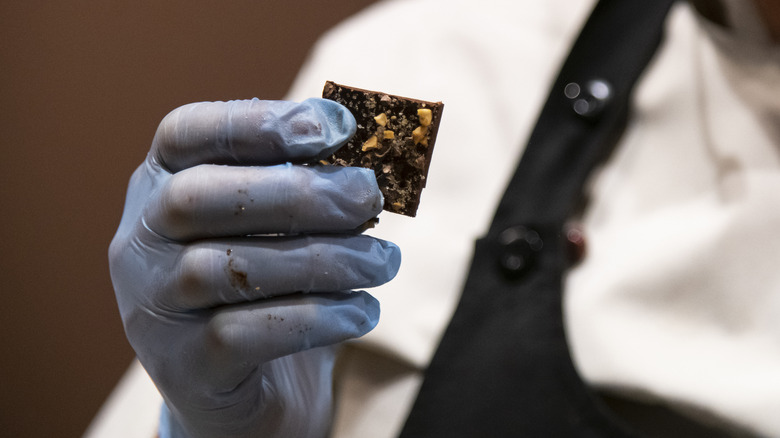The Bizarre Red Light Tactic Chocolate Tasters Follow
Professional taste testers have been trained to hone their senses. These culinary professionals can discern the different types of sour tastes and have developed a specialized vocabulary in order to categorize a range of foods and flavors. Chocolate taste testers, in particular, have acquired the ability to distinguish specific chocolate brands and identify a variety of spices and herbs in each bite.
From recognizing the differences between Mexican chocolate and Filipino tablea to noting the presence of subtle, nuanced botanicals within chocolate bars, these professionals have the treat on lock — even when they are sitting inside darkened rooms.
If you think eating bits of chocolate as a profession sounds like a dream job, you should be aware of some of the conditions these testers must work under. The rooms aren't always ideal and the lighting can be intentionally colored red before any pieces of chocolate are offered.
A controlled environment for tasting
One professional chocolate taster admitted to Reader's Digest that tasting rooms are colored red to confuse the professionals. By removing their known sense of sight, tasters are forced to rely on the other senses and not judge the chocolate pieces they are served by the color or shade.
Chocolate isn't always black in color and can come in a range of hues — depending on how the cacao beans are roasted and how much cocoa is used in the chocolate-making process. Without being able to see the exact color of the sample, these testers have to turn up their perceptions of taste and smell.
While sampling chocolate at home, notice the color and scent of each piece before you taste it. As the chocolate melts on your tongue, observe the texture and taste. Without the confines of a controlled testing area, you're free to enjoy any kind of chocolate that you'd like — without the pressures of being a professional.

